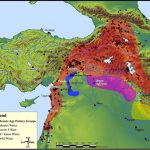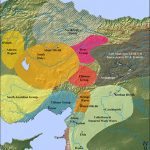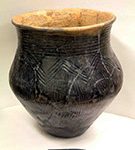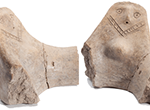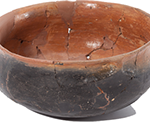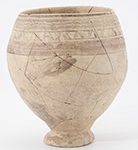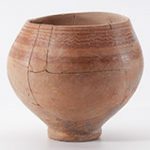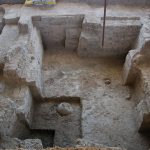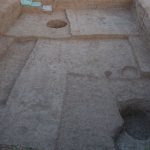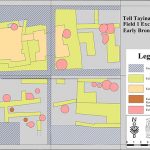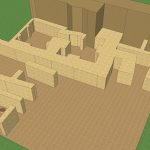The third millennium BCE witnessed the rise of city life and the development of the world’s first states in the ancient Near East. Extensive trade networks played a formative role in the emergence of these early states. The strategic location of the Amuq Plain made it a particularly attractive place to settle. It became a vitally important intersection for trade and cultural interaction throughout the Near East.
The Early Bronze Age also experienced wide-ranging population migrations. Most prominent of these was the movement of groups out of the Transcaucasus. In the first half of the third millennium, one such group, known for their distinctive pottery, known locally as Red Black Burnished Ware, and Karaz Ware in eastern Anatolia, or Khirbet Kerak Ware in the southern Levant, settled extensively in the Amuq Plain, before continuing south to Syria and Israel/ Palestine.
In the later half of the third millennium, the first states began to emerge in the region. One of the earliest historically attested kingdoms in northern Syria was Ebla, located southwest of Aleppo. A group of tablets from the palace archive at Ebla indicates that Ebla had economic and political relations with Ala-la-ḫu, which at the time was a dependency of Ebla, but administered by its own ruler ugula.
Although bearing a strong resemblance to the name Alalakh, the Middle Bronze Age kingdom of the Amuq centered on the nearby site of Tell Atchana, the extent of Early Bronze occupation at Tayinat, and the dearth of contemporary settlement at Atchana suggests that the Ala-la-ḫu referenced in the Ebla records should be found at Tayinat.
Excavations in Field I, located in the center of the upper mound, thus far have exposed almost 200 sq m of a large complex, preserved in two discrete architectural phases, that dates to the EB IVB, or the post Palace G phase at Ebla, and produce evidence of an earlier complex contemporary to Palace G below it. The Field I complex has produced evidence of administrative activity, including multiple cylinder seal and seal impressions, and pottery with stylistic parallels to the Ebla sequence. The TAP excavations thus have demonstrated the archaeological potential and accessibility of the EBA levels at the site, and are now poised to expose substantial areas of the EBA settlement possibly contemporary with the Palace G complex at Ebla.

